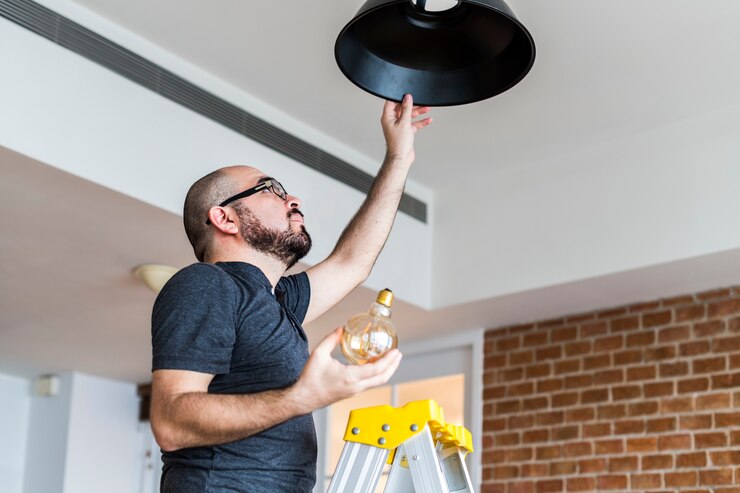27 Sep

|
Getting your Trinity Audio player ready...
|
In a world where sustainability meets charm, retrofitting older buildings emerges as a pivotal practice. This process not only preserves the historical essence of structures but also breathes new life into them with modern upgrades. For garden enthusiasts, homeowners, and landscapers, understanding how to effectively retrofit older properties can open doors to endless possibilities in design and functionality.
This blog post will guide you through the myriad benefits of retrofitting, providing insights and practical tips on how to blend the old with the new.
Table of Contents
Why Retrofitting is the Future
Retrofitting isn’t just a trend; it’s a sustainable approach to preserving architectural legacy while ensuring buildings meet contemporary needs. By enhancing older structures, you not only reduce waste but also contribute to environmental conservation.
Retrofitting aids in energy efficiency, significantly reducing utility costs over time. With advancements in technology, incorporating energy-efficient systems into older buildings is more feasible than ever. Additionally, retrofitting enhances property value by updating its functionality without sacrificing its historical charm.
Preserving the character of older buildings plays a critical role in maintaining the cultural tapestry of a community. It reflects respect for history while allowing modern conveniences to weave seamlessly into daily life.
Retrofitting for Energy Efficiency
One of the most compelling reasons to retrofit is the energy efficiency gains. Older buildings often suffer from outdated systems that drain resources and inflate utility bills. Retrofitting replaces these systems with state-of-the-art alternatives designed for optimal performance.
For instance, installing modern HVAC systems can drastically improve a building’s climate control while consuming less energy. Similarly, upgrading to LED lighting reduces electricity consumption and enhances illumination.
Insulation is another crucial aspect. By adding or upgrading insulation, you ensure that your building retains heat during winter and stays cool in summer, leading to substantial savings.
Enhancing Comfort Through Retrofitting
Comfort is paramount, and retrofitting can significantly enhance the livability of older buildings. By updating heating, cooling, and plumbing systems, occupants experience improved comfort and reliability.
Modern windows and doors are also game changers. They provide better insulation, reduce noise pollution, and add a contemporary touch to the building’s aesthetics. Retrofitting also involves upgrading roofing materials to ensure durability and weather resistance.
Incorporating smart technology through retrofitting allows homeowners to control their environment with ease. From thermostats to security systems, technology improves convenience and peace of mind.
Preserving Historical Integrity
While modernization is essential, preserving the historical integrity of a building is equally crucial. Retrofitting offers innovative solutions to maintain the aesthetic appeal while integrating modern amenities.
Using authentic materials for repairs and renovations ensures that the original character of the building is not compromised. Techniques like precast stone billings provide durable and visually appealing solutions.
Historical preservation is not just about maintaining appearances; it involves understanding the architectural significance of a structure and working within those parameters to enhance its functionality.
Cost-Effectiveness of Retrofitting
Many assume that retrofitting is an expensive endeavor, but it can be surprisingly cost-effective in the long run. Initial investments are often offset by the reduced energy costs and increased property value.
Government incentives and grants are available for those who choose to retrofit, further reducing out-of-pocket expenses. These programs encourage sustainable practices by offering financial benefits to property owners.
Furthermore, the longevity of modern systems means fewer repairs and replacements, resulting in long-term savings for homeowners and investors alike.
Environmental Impact of Retrofitting
Retrofitting older buildings is an environmentally responsible choice. By reusing existing structures, you minimize the need for new construction, which significantly reduces carbon emissions.
The process also encourages the use of sustainable materials and energy-efficient systems, contributing to a lower carbon footprint. In this way, retrofitting aligns with global efforts to combat climate change.
For garden enthusiasts and landscapers, retrofitting presents opportunities to incorporate eco-friendly practices. This includes water-saving irrigation systems and the use of native plants to complement the existing ecosystem.
Creative Design Opportunities
Retrofitting opens doors to creative design possibilities. By blending old-world charm with modern aesthetics, you can achieve a unique look that stands out.
Interior design can be tailored to highlight original features while incorporating contemporary elements. This fusion creates a harmonious balance between the past and present.
For landscapers, retrofitting provides chances to integrate outdoor spaces with the building’s architecture. This synergy enhances aesthetic appeal and offers functional uses for outdoor areas.
Community and Cultural Benefits
Retrofitting older buildings contributes to the community by preserving its architectural heritage. This practice maintains the cultural identity of neighborhoods, fostering a sense of place and history.
Communities benefit economically as well. Retrofitted buildings attract tourism and business, stimulating local economies and encouraging further development.
Cultural benefits extend beyond architecture. Retrofitting often includes the preservation of historical narratives, ensuring that stories and traditions are passed down through generations.
Common Retrofitting Challenges
Despite its benefits, retrofitting comes with challenges. Older buildings may have structural issues that require careful attention during the retrofitting process.
Compliance with modern building codes can be complex, necessitating expert knowledge and craftsmanship. This often involves collaborating with architects and engineers to ensure safety and functionality.
Budget constraints can also pose challenges, but they can be mitigated through strategic planning and the exploration of funding options.
Overcoming Retrofitting Obstacles
Addressing challenges requires a proactive approach. Conduct thorough assessments of the building’s condition to identify potential issues early on.
Engage professionals who specialize in retrofitting older properties. Their expertise ensures that work is done efficiently, adhering to both aesthetic and safety standards.
Stay informed about available incentives and grants. These financial aids can alleviate budgetary concerns and facilitate the retrofitting process.
Conclusion and Next Steps
Retrofitting older buildings is a rewarding endeavor that offers numerous benefits. By preserving historical integrity while incorporating modern conveniences, you create spaces that are both functional and beautiful.
For garden enthusiasts, homeowners, and landscapers, retrofitting presents opportunities to contribute to sustainability and community heritage. Consider exploring retrofitting options for your property and consult with experts to maximize the potential of your project.
For further reading and resources on retrofitting, explore our curated list of articles and guides. Whether you’re starting a new project or looking to expand your knowledge, there’s always more to discover in the world of retrofitting.


